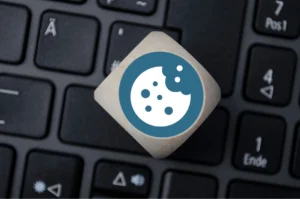Table of Contents
If you’ve been in the education industry long at all, you know how much kids love STEM. The subject brings a number of benefits, including critical thinking, technical skills, and more. Its entire field is on the rise — according to Forbes, the Bureau of Labor Statistics Census predicts a 13 percent increase in science, technology, engineering and mathematics jobs in the United States between 2017 and 2027. And it’s not just being taught for jobs — the topic might just be our nation’s next line of defense against cyberattacks, too.
The Link Between STEM Skills and Cybersecurity
The main place where STEM and cybersecurity cross paths is technology. When we dive into what cybersecurity actually is, it involves coding, programming, and more — all of which require some serious scientific thinking to plan and implement.
STEM also affects cybersecurity in real life as our students grow. By teaching these two subjects together, experts say you can help to develop a skilled cyber workforce, enhance national security, and advance technology and the economy.
Three Tips to Include STEM Skills in Your Cybersecurity Lessons
With a little planning and creativity, combining STEM and cybersecurity lessons can be pretty simple.
1). Cover the Basics
Cybersecurity lessons may include a lot of familiarization with phishing tactics, strong password making, and the like, but the people committing the crimes are also deep into the tech space. Help kids learn about malware and how it works — this isn’t just a STEM skill, it’s a way to help them prevent those pesky viruses from attacking their devices down the line. Who knows — the lesson you teach might spark an interest in a high-level cybersecurity job or STEM degree in the future.
2). Don’t Shy Away From Studying Hackers
The science piece of STEM includes tons of data. In cyber and information security, it can boost students’ overall understanding to look into what the hackers are doing. Knowing the prevalence and common practices of the guys on the other side can help students prevent the crimes from occurring in their lives, too.
· Who is being hacked?
· When are they being hacked?
· How often are they being hacked?
· What is the average age group of individuals being hacked?
· What social media platform is most susceptible to hackers?
Knowing all about cybersecurity threats, hackers, and their victims is likely to spark many more tech-related conversations in the classroom.
3). Give Cybersecurity Curriculum a Go
If you’re ready to teach both STEM skills and cybersecurity to your high school students at the same time, a carefully curated software can help. SurfWisely is an engaging, gamified program that uses the competitive edge of sports to entice students in cybersecurity education. Our skill set is designed to make a difference in the real world — preventing phishing, malware, and so much more.
If our cybersecurity + stem program sounds like it might be a good fit for your school, feel free to contact us at any time. We’d love to support your learners as they dive into these important topics.






